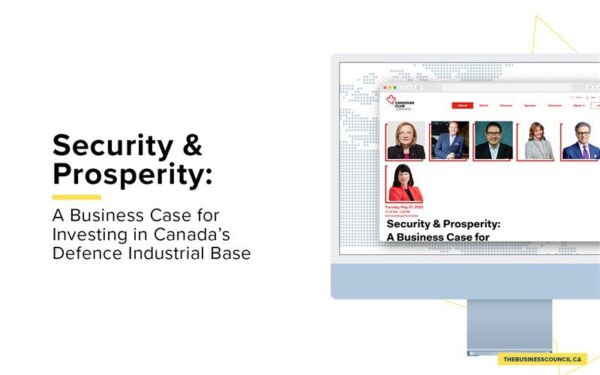When it comes to fiscal policy, quality matters as much as quantity
As published in The Globe and Mail.
Trevin Stratton is chief economist and vice-president of policy at the Canadian Chamber of Commerce. Robert Asselin is senior vice-president of policy at the Business Council of Canada.
When the COVID-19 emergency struck last March, the federal government moved to get cash into the hands of the newly unemployed, opting for speed over perfection in program design.
Over the past seven months, Ottawa has spent close to 20 per cent of Canada’s GDP on income support for individuals and businesses. No other Group of 20 country has come even close to that level of pandemic spending relative to the size of its economy.
Given the most recent spending commitments made in the recent Speech from the Throne, it is not difficult to imagine Canada emerging from the current crisis some time in 2022 with a federal public debt exceeding 100 per cent of GDP, unemployment levels two percentage points above those of February, 2020, a weakened outlook for our natural resource sector and a widening trade deficit, all coupled with increased demand for health and long-term care spending.
In the span of a few months, the government of Canada created no fewer than 68 new support programs related to COVID-19 – 76 if you include tax liquidity measures. That includes updated core support plans to replace earlier programs such as the Canada Emergency Recovery Benefit (CERB) and the Canada Emergency Wage Subsidy (CEWS).
On top of that, the recent Speech from the Throne promised billions of dollars in new spending on child care, pharmacare, a new EI system and skills training. We may get a clearer picture of the cost of these commitments a few weeks from now when Finance Minister Chrystia Freeland delivers an economic and fiscal update.
In this increasingly polarized public-opinion environment, debates over fiscal policy and the size of the deficit have taken starkly opposing positions. Either you are against more spending and are thus a deficit “hawk,” or you support spending and are unconcerned about the burden of public debt.
The reality, of course, is that there is an ocean of grey between these black-and-white positions. Governments do not need to make a binary choice between spending and “austerity.” No one serious is calling for austerity in the midst of an unprecedented health and economic emergency. But not all types of spending are born equal.
Historically low interest rates and unprecedented quantitative easing, in which the Bank of Canada buys government bonds or other financial assets in order to inject money into the economy, have effectively overshadowed an important debate about the quality and effectiveness of deficit-financed COVID-19 spending.
According to RBC, the federal government transferred more money ($56-billion) to Canadian households through the CERB and other programs in the second quarter of 2020 than they lost in wages and salaries owing to the pandemic ($23-billion). As a result, net household disposable income spiked 11 per cent. To put $23-billion in context, it is equal to the amount spent last year on the Canada Child Benefit – the federal government’s biggest direct transfer to Canadians. “We have significant fiscal firepower sitting in the chequing accounts of Canadians,” RBC chief executive Dave McKay said in an interview with The Globe and Mail last month.
The federal government’s strong fiscal response to COVID-19 has undoubtedly helped sustain our economy through the crisis. It would be wrong to leave Canadians to their own devices amidst such a catastrophe. While it is undeniable a strong fiscal response was warranted, did we have to increase our debt-to-GDP ratio by 20 per cent in only six months? With the second wave of the virus now in full force, should we not have kept more fiscal powder dry to ensure the most severely affected individuals and businesses will continue to be supported over the long term? And could a larger share of the money have gone to create a more productive economy, such as upgrading worker skills and targeted R&D investments?
It’s time for a more targeted approach that focuses on the quality – not quantity – of support. As the Governor of the Bank of Canada said in late October, we are in this for the long haul. An effective vaccine may not be widely available until next year, or even later. Policy makers must be laser-focused on the nature of fiscal spending. Furthermore, being saved by low interest rates is not an economic strategy in itself. In fact, powering our way out of recession by potentially overstimulating housing markets and adding even more debt to the household sector may create real and lasting negative effects.
With finite public resources available, we need to look carefully at the return on investment of government spending. Some programs are more beneficial than others. Some policies will contribute more to economic growth. Let’s make sure federal spending is focused on quality over quantity.









